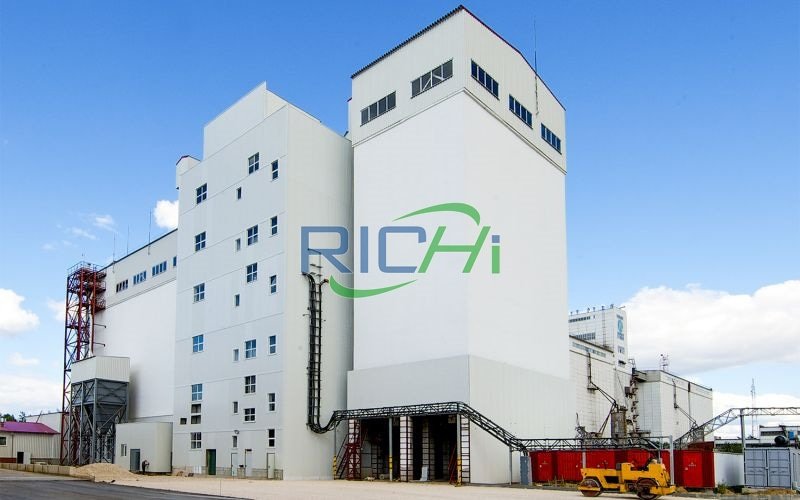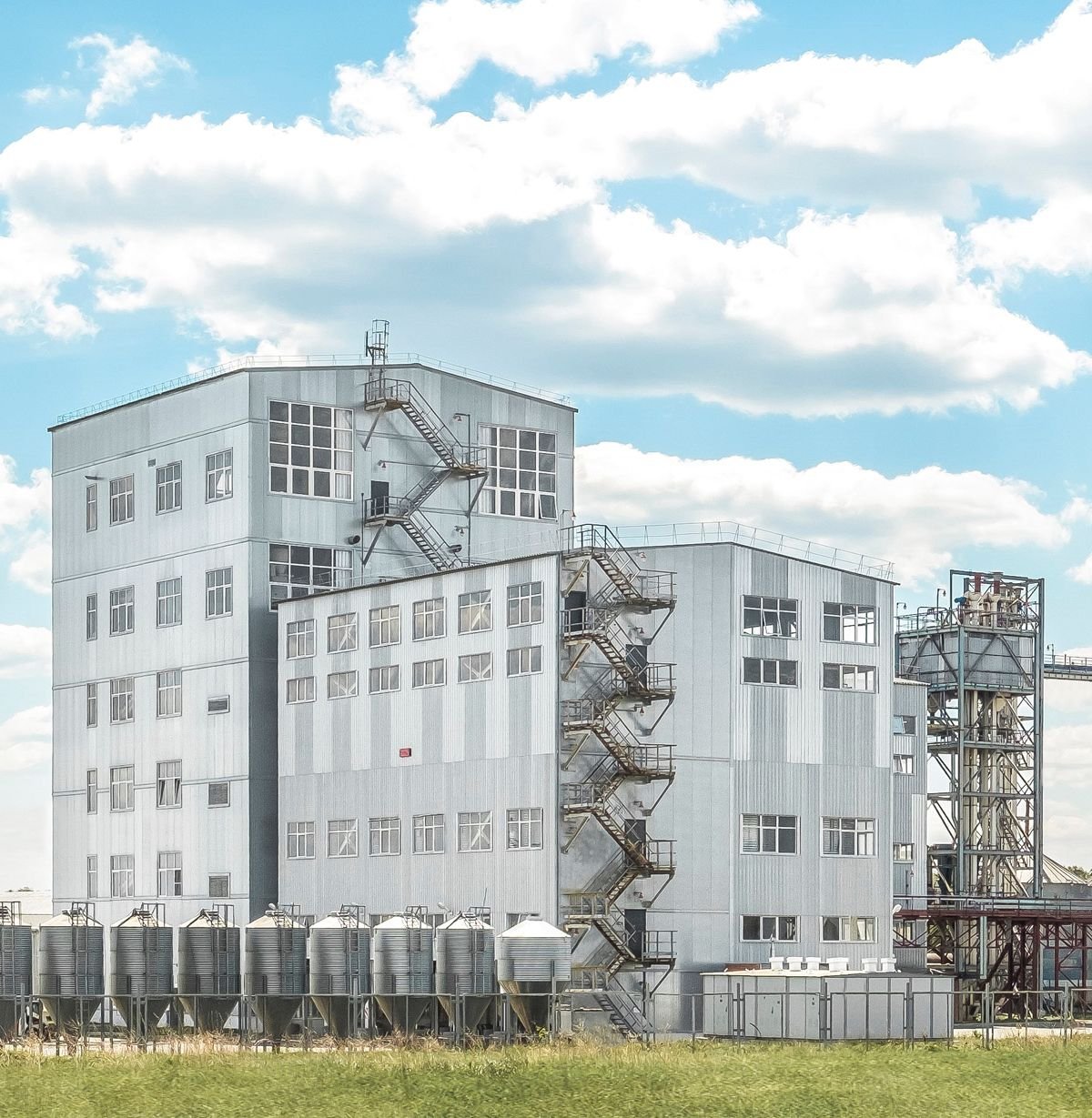Designing an 8-10t/h animal feed processing plant involves selecting the right equipment for each stage of the production process. Here’s a comprehensive guide on how to choose the appropriate equipment to ensure efficiency, consistency, and cost-effectiveness:
1. Understanding the Production Process
A typical animal feed processing line includes:
- Raw Material Receiving and Storage
- Grinding
- Mixing
- Conditioning
- Pelleting or Extruding
- Cooling and Drying
- Packaging and Storage
Each stage requires specific equipment, and the selection should be based on the plant’s design and production flow.
2. Key Equipment Selection
Grinding Equipment
Types:
- Hammer Mills: Versatile, suitable for various ingredients.
- Roller Mills: Ideal for grains, producing uniform particle sizes.
Considerations:
- Choose based on ingredient types and desired particle sizes.
- Ensure the grinder can handle the feed formulations efficiently.
Mixing Equipment
Types:
- Horizontal Paddle Mixers: Excellent for large volumes and uniform mixing.
- Vertical Screw Mixers: Suitable for smaller batches or premixes.
Related post: animal feed production plant
Considerations:
- Capacity should support continuous production flow.
- Ensure the mixer achieves thorough blending of ingredients.
Conditioning Equipment
Types:
- Single or Double Shaft Conditioners: Prepares the feed for pelletizing by adding moisture and heat.
- Steam Injection: Enhances pellet quality.
Considerations:
- A twin-shaft conditioner may be ideal for better control over conditioning parameters.
Pelleting Equipment
Types:
- Ring Die Pellet Mills: Central to the pelletizing process.
- Die Size and Thickness: Should match the type of feed.
- Motor Power: Must support 8-10t/h production.
Considerations:
- Choose a machine from a reputable manufacturer known for high-capacity production.
Extrusion Equipment (if applicable)
Types:
- Single or Twin-Screw Extruders: Used for producing extruded feeds.
- Adjustable Barrel Configuration: For different formulations.
Considerations:
- Ensure capacity matches production requirements.
- Select equipment that handles various formulations and pellet sizes.
Cooling and Drying Equipment
Types:
- Counterflow Coolers: Efficient for cooling pellets.
- Moisture Control: Crucial for pellet quality.
Considerations:
- Ensure sufficient cooling capacity for 8-10t/h production.
Packaging Equipment
Types:
- Automated Bagging Systems: For efficient packaging.
- Weighing Accuracy: Ensure precision and speed.
Considerations:
- Equipment should handle various bag sizes and provide accurate filling.
Material Handling Equipment
Types:
- Bucket Elevators: For vertical transport of materials.
- Screw Conveyors: For horizontal and inclined transport.
- Pneumatic Conveying Systems: For handling bulk materials.
Considerations:
- Ensure all conveyors and elevators are sized appropriately for the 8-10t/h capacity.
Control Systems
Components:
- Programmable Logic Controllers (PLCs): Manage operations.
- Human-Machine Interface (HMI) Systems: For monitoring and adjustments.
- Recipe Management Software: For managing feed formulations.
Considerations:
- Invest in a control system that enhances automation and consistency.
Dust Collection Systems
Types:
- Cyclones and Bag Filters: For dust control.
- Ducting: Sized for the plant’s capacity.
Considerations:
- Effective dust control improves safety and hygiene.
3. Factors Influencing Equipment Selection
- Capacity and Scalability:
- Equipment should handle 8-10t/h with room for future expansion.
- Energy Efficiency:
- Look for energy-efficient motors and systems.
- Consider heat recovery options.
- Flexibility:
- Choose equipment that handles various feed formulations.
- Maintenance Requirements:
- Opt for equipment with straightforward maintenance and available spare parts.
- Integration Capabilities:
- Ensure equipment can be integrated seamlessly with the overall system.
- Quality and Reliability:
- Invest in high-quality equipment from reputable manufacturers.
- Compliance with Regulations:
- Ensure equipment meets relevant food safety and environmental regulations.
- Space Efficiency:
- Consider equipment layout and fit within the plant’s space.
- Cost-Effectiveness:
- Evaluate the total cost of ownership, including operational and maintenance costs.
- Supplier Support:
- Choose suppliers offering comprehensive support and training.
4. Consultation and Planning
- Consult with Experts: Engage feed mill designers and visit similar plants.
- Compare Suppliers: Evaluate options from multiple equipment suppliers.
- Consider Future Trends: Plan for potential expansion and market changes.
5. Testing and Commissioning
- Installation and Calibration: Ensure proper setup and calibration.
- Trial Runs: Verify capacity and pellet quality.
- Operator Training: Provide comprehensive training on equipment and safety.
Conclusion
Choosing the right equipment for an 8-10t/h animal feed processing plant requires a thorough understanding of each production stage and careful selection based on factors like capacity, efficiency, flexibility, and long-term reliability. By ensuring all components work together efficiently, maintaining equipment properly, and continuously optimizing the production process, you can achieve a high-performing feed plant that meets current needs and supports future growth.
For details please contact: Richi Pellet Machine
WhatsApp:86 138 3838 9622
Email:enquiry@richipelletmachine.com










